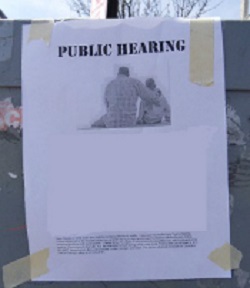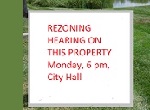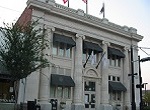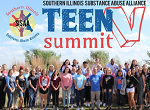Robust Community Engagement Increases Support
Last Reviewed: July 5, 2025
An outstanding community engagement process can make your organization or government's city planning or problem-solving projects more likely to make it all the way through plan implementation. You can use innovative online community surveys and other techniques to build informed public participation in the process.
Good real estate developers also want to understand positive methods for community engagement in the town planning process, even when dealing with an individual property.
I have been involved in several hundred plans for downtowns, neighborhoods, towns, and cities, and in some outstanding public and private regional planning projects also. Almost every time the problem has been that the people at the top want to control the outcome!
Or sometimes they just think that they know best and that ordinary people have no ideas, opinions, and experiences that are superior to those of the elected officials or professionals running the process. The rest of our writing team for this website verifies that this is not just one isolated city planner's experience.
 Is a public hearing exciting? Not often.
Is a public hearing exciting? Not often.If you are part of the public, unfortunately you often have to work hard to push for and participate in an open community engagement process that you can influence at several points and in flexible ways.
It took a long time for me to want to move away from the older term, citizen participation, to citizen or civic or community engagement.
But I love the notion that people not only have their bodies present to participate, but also that their minds and hearts are engaged with the subject matter.
The move from the word citizen to the word community is completely appropriate, as we increasingly recognize that not all of our residents are citizens. What might be less fortunate about substituting "community" for "citizen" is that sometimes institutional and corporate interests claim to be part of the "community" and therefore want more influence than they should have.
The International Association for Public Participation does excellent work around the world in researching and describing a process of public decision making, using the continuum of:
1. Inform
2. Consult
3. Involve
4. Collaborate
5. Empower
Here informing implies the least involvement of people in decisions that affect their futures, and empowering grants the greatest say in decision-making.
Notice that community engagement entails steps 1, 2, and 3 above.
If you're interested in how public participation plays out across different cultural contexts, you should see the association's excellent research on public participation across cultures.
If you're a community person and you've been invited to a sham community engagement process, certainly attend and do what you can. But if you have the privilege of being able to participate in an open-ended discussion or design process, consider yourself lucky and make the time.
Let's divide the different types of community engagement processes under broad headings below, with some tips for conducting or participating in each.
Open Houses as a Means of Obtaining Community Input
The primary event at an open house style event for the public is the ability of the public to look at displays and interact with designers and planners. Often the results already are cooked, and if you're a public participant, your job is to apply the rubber stamp or be able to articulate why not.
So open houses may or may not be good methods of interacting with the community, depending on whether the designers are willing to listen to and learn from opposing points of view.
The concept that busy people can attend at several different dayparts is a definite advantage. I like the 4-8 p.m. range in my particular community. In that community, this translates to "before dark," "after work," and "after dinner" timeframes. In your location those may or may not be from 4-8 p.m., depending on lifestyles and time of year.
If your venue is such that you can leave an exhibit in place for several days, and you have a way to collect feedback through electronic or paper means, that's even better.
Also it is extremely useful to move the open houses from one location to another within the project area if you can find more than one suitable venue. People may feel more comfortable in one place than another, and of course distance and convenience are factors for some people.
The fact that people may choose to spend a short or long time at the open house is its advantage, and try not to dull that by expecting people to sit through a lengthy presentation.
If you must feature a "sage on the stage," or else people won't be able to understand the options, make it brief and announce beforehand when the presentation will occur.
If you can create a self-explanatory exhibit, though, that will be better. If you need a computer-based presentation that is set up to continuously repeat as an explanation, that will work fine. But my experience is people won't pay much attention unless the screen dominates.
If you can work in a little public participation game as a form of voting, that can be very useful.
I particularly like "budgeting" exercises, whether or not the subject is money. I can't recommend often enough allocating people an imaginary $1,000 or some number a household can relate to, and asking them to divide it among the various types of programs you could offer.
If you like, you can place constraints on this method of community engagement. For example, tell participants they must allocate at least $364 for office help, but they can allocate any amount over that if they wish.
If the subject is visual, plan a feature to switch off the left brain and engage the right brain. A little art or music off the topic can serve to stimulate community engagement in a design endeavor that's essentially an art project.
Another worthwhile exercise early in a planning process is to play a little word association game with people. This works better as an oral exercise, but putting the words on paper can work too as long as you emphasize to participants that they should write down the first word they think of. As planners are exploring the project area, think about asking what people think of when they hear the word for the neighborhood name, a street name, a business name, park name, or a particular issue such as abandoned buildings, eyesores, best street in the neighborhood, high-rise apartments, or some other term that you think is pertinent to the project.
To help people prioritize goals or projects, people may appreciate a card sorting project. Some folks will do better as sorting cards with their favorite on top and least favorite on the bottom, as contrasted to doing the same thing with numbers on a piece of paper. You also could ask people to sort the cards into stacks of acceptable, not acceptable, and don't know.
I like maximum planner and community engagement with each other in dialogue, so the more individual conversations planners can hold, the better.
In the open house format, one of the advantages is that you can forestall discussion from the floor if you wish. You may choose to allow informational questions after a presentation, if any, but don't entertain discussions between audience members.
On the other hand, if you're a planner, letting citizens get into discussions with one another around the displays can be very useful.
Take Your Display to Where the People Are
All of the above assumes that the planners pick a location and the people have to go to that destination. But it is also possible for the planners or sponsors of a project to take a limited version of their displays to where people naturally congregate. This might be a place of worship, school, shelter in a park, recreation center, farmer's market, festival, prominent employment location in the neighborhood, important plaza or street corner, or office of an agency. Look for these opportunities wherever there is foot traffic.
Libraries can be good places for exhibits and often are cooperative. If the topic of your planning is significant and long-range, you may be able to entice a local museum to allow you to leave a display there. When you are leaving unattended exhibits in place, try to arrange a method of obtaining feedback, such as a phone app or even paper comment cards.
Sometimes even a neighborhood-oriented grocery store can be a good choice, as long as the display is kept in the checkout area and takes up minimal space.
Destinations such as coffee shops, community information fairs on any topic, food courts in malls, children's sports leagues, or congregations may be willing to cooperate by allowing representatives of your project to engage in conversations with people who are going about their daily lives. You could try a pop-up tent near the site under discussion if there is ample foot traffic. Fairs, festivals, and outdoor flea markets tend to be less fruitful for community engagement, as people are seeking recreation and socializing rather than expecting to give opinions or take in information. Most conversations at such venues are quite superficial.
Public Hearings and Less Formal Meetings About Planning Issues
Many governments are required by law to hold public hearings as a method of public participation in particular types of legal actions, commonly including development approvals, zoning matters, and formal adoption of plans.
Some with disagree with what we are about to say, but we believe that public hearings about large development plans should occur as early as possible in the approval process, providing that those presiding over the hearing inform the audience that the proposal may not be completely finalized. Then you can schedule another public hearing when the developer and the planning staff agree that the proposal is polished enough to answer all reasonable questions.
If you wish to hold a public hearing about a plan, do it near the end of the process when you think most concepts are fully developed and you need to do a check to make sure community engagement is still positive.
An alternative would be to conduct a public hearing at the very beginning of a project and use it to build community engagement. This is truly a bottom-up approach. If you do this, it's important to hold a meeting at the end of the community planning process so you can report back how you addressed the topics of concern at the first public hearing.
You may be able to work out how to open a public hearing to an online process, so that people at home can use a video calling software to participate in the hearing. If you are expecting this to occur at a legally required hearing, the city or county attorney will need to rule on this procedure.
Less formal meetings commonly are better for obtaining true feedback and building long-range community engagement. Many are intimidated by the mechanics of a public hearing, including being sworn in, having to sign in, having to state your name and address for the record, being tape recorded, being recorded for local cable television, and all kinds of things that may occur.
If you are able to hold a meeting within the affected neighborhood, and can conduct it without reference to any procedures except perhaps Roberts Rules of Order if things get out of hand, that's best.
At the meeting, the person who will be doing the majority of the decision-making about what is written into the plan should be either in attendance or facilitating the meeting. If he or she is a poor facilitator, and gets stuck in filibustering for or defending his or her own ideas, choose someone else.
Allow the principal author of the draft plan to sit on the stage, but let someone adept at working the audience make sure that everyone is recognized and awarded an appropriate amount of time.
If you have topics you definitely want to hear about, prepare and distribute an agenda and go down the list. Don't leave it to chance that an important topic will be mentioned.
These meetings will be different depending on whether you are just starting a planning effort or whether you are fairly far along. At the beginning you can afford to ask extremely open-ended questions, and you should.
Ask imagination-inspiring questions. Model possibility thinking and emphasis on community assets rather than problems. If your crowd is participatory, divide them into small groups of 6-8 people and let each group discussion. Have each group select a spokesperson and report back to the group. This is an excellent method of assuring that everyone who attends feels that the community engagement process was genuine.
If your neighborhood association is participating in a planning process where the format is unknown to you, rehearse key community members so they will perform well in whatever open-ended and divide-and-conquer tactics the planners might use against you. If you're on the community member side of a community engagement process that seems skewed toward a pre-determined end, you'll need to play smart.
If you're in charge of the planning process, only call a gimmick-less public meeting for discussion when (a) you really don't know what people think and would like to start a dialogue, (b) you're in a community where community engagement is something of a sport (you know who you are), and/or (c) you think people will definitely be opinionated about the topic.
Having to spend half an hour in a small group where no one really cares about the topic is almost as boring as having to sit through an hour-long public hearing.
If you're facilitating a meeting and have turned to small groups with questions to discuss, maps to mark up, play money to divide, or little people to assign to blocks, wander around animatedly talking to folks and gently assuring that what they're doing is relevant.
If the sponsors are in a little huddle, out in the hallway on your phone, or looking bored, why do you think the people will be excited about your community engagement task?
Finally, if you need a really intense planning process, especially one that is oriented toward visual decisions, consider the charrette methodology.
Virtual Meetings
One of the impacts of the COVID-19 pandemic has been the practice of holding virtual meetings. Once the province mostly of businesses, online meeting services have exploded in popularity, to the point that almost everyone who is at all active in civic life, or in a charitable organization such as a congregation or arts group, understands the technology and will not be put off by it.
Virtual meetings require the same careful preparation as face-to-face meetings. You can increase effectiveness by urging people to register so that you can send them study materials in advance. Also make sure that presenters are well-versed in the technology so that technology glitches don't steal the show.
While virtual meetings no doubt will find a place in a few applications, in general we think they are a poor substitute for the much richer communication that our bodies convey when we are in the same room at the same time.
At the same time, your experience with virtual meetings in times of quarantine may help you focus on the importance of providing excellent support materials for meeting attendees.
For more detailed suggestions, see articles in our April newsletter, May newsletter, and June newsletter in 2020.
Community Surveys
Surveys run the gamut from phone to paper to Internet-based. If you can afford a professional or at least an experienced person to help you word the survey research, that would be best. Anyone with a master's degree should have some notion of how to write a questionnaire.
A good survey provides information about public opinion, but it doesn't necessarily inspire people community engagement. So consider carefully what you need--information or participation.
Let's take the survey administration methods one at a time:
- Phone. This has become largely obsolete, as so many people give up their land-based lands or have unlisted numbers. If you have a community where you have access to most people's numbers, you might still be able to hire a company called a field service to conduct the survey. Or in a very small town, you could do it yourself. The more useful type of phone survey can be for a membership organization to randomly select from its own members, most of whom have given you their phone numbers.
- Written. Mailing expenses are prohibitive for many organizations. One possibility is that if you mail a newsletter to your membership, you could include the survey inside and ask for its return. You also can conduct a written survey at a regular meeting. Written surveys give a feeling of anonymity and therefore boldness that phone surveys can't offer. A more formal style of presenting the questions also is possible, and of course each question is presented uniformly to every respondent. On the phone a slight vocal inflection might influence the answer.
- Internet. You can post your survey on Survey Monkey or a similar platform. You then will receive the benefits of the paper survey with more versatility about when people can answer, and even greater anonymity. It looks snappy too, and younger folks especially will be likely to think it's less of a bother. The survey organization will tabulate results for you too, which definitely is a bonus. Another advantage is that you can see results as they come in. You lose scientific rigor, but the most interested and tech-savvy people will respond. Especially if you need a quick snapshot, this is a great tool for you. It's easy to use, and you can set it up yourself.
- Keypad polling. Keypad polling is magical when a community is stuck in the same old thinking patterns. It does require getting people in one place at one time, but the advantage is in giving all participants (who could be by invitation only if you want the opinion of a particular group) equal weight.
Since neighborhood leaders seem less familiar with keypad polling than other methods, we will say a bit more about those. Ask the questions that people are afraid to answer aloud, for fear of angering the powers that be.
Usually you rent the keypad gadgets, and you have one for each participant. On a screen you typically put up a question with multiple choice answers. Then the participants vote on their keypads, and most systems have a way of instantly displaying the answers.
Sometimes it's even possible for the meeting organizers to change their minds about what questions to ask as they go through the meeting, based on previous answers.
For all survey methods, balance whether you need a forced choice of answers, in which you want to form multiple choice questions, or whether you're really fishing for attitudes or new ideas. Open-ended questions (such as "What would you change about the neighborhood?") are best when you don't want to artificially limit responses.
Truthfully, open-ended questions are a better community involvement and engagement process, but more work to tabulate.
Consider also whether the information you need is word-based, number-based, or picture-based.
For visual information, you may want to ask people to participate in a visual preference survey or other visualization exercise. This survey asks people to choose between at least two photos in desirability, and may ask open-ended why questions or closed-ended questions about the choices.
Visually-oriented learners and communicators will respond to illustrations that planning consultants can create with various software, or even to 3-D visualizations that appear to allow you to walk around or through a prospective development or streetscape.
If you've never used a visual preference survey as community involvement in your area, you can use this technique simply to perk up interest. We all like to look at pictures, and doing so appeals to the intellectually lazy.
The federal government now requires transportation visualization techniques as part of the planning process.
Field Trips to Obtain Community Input and Raise Awareness about Solutions
Field trips are enormously useful community engagement processes, when teamed with other methods. If people are lukewarm about a plan or planning concept, you may need to bus them to the study area and have them get out and walk around to see things from a different perspective. Many people, particularly the kinesthetic learners, come alive when they can walk in an area.
Field trips also are helpful as a bonding experience for an advisory committee, an eye-opener for those who usually don't visit undesirable neighborhoods, or as a geography primer if you are covering a large scope.
Otherwise the experience will be valuable in either getting everyone on the same page or accentuating exactly what the differences of opinion are. Many folks and some ethnic groups really are quite bad at reading maps and understanding spatial relationships, so allow them another opportunity to master that information.
The field trip also is useful as a way of "ground truthing" a nearly complete plan. It's a way of checking whether people really believe what they have been saying. If dissent arises on such an adventure trip, you need to return to broad community engagement.
The other field trip that I really advocate is a trip to a nearby but unfamiliar location where a technique under consideration can be demonstrated. This may not be a short trip.
If you are in a smaller city and can take a two-hour bus drive to a larger metro area to see three different examples of streetscapes when you are contemplating a streetscape project in your smaller city, the trip will really solidify opinion and illustrate new concepts.
Sometimes a trip from one city to another is warranted. If you have the budget and a nearby city has an example of what you are considering or would like to happen, the trip will be well worth it if you can find a cooperating guide or organization there. Usually a city government will be happy to cooperate with such a request, or suggest a local community organization if that is more appropriate.
Another use of the out-of-town trip for those who have access to various examples right at home is that it can help break a deadlock. When you visit another city, shared experience tends to build bonds among people.
The drawback to field trips of all types as community engagement is that the degree of advance planning required is quite high, participation is limited, and costs per participant are high unless your field trip is appropriate for a procession of private autos.
Website Collaborations on Community Issues
Quickly many innovative ways to use websites or web-based groups to inform and provide community engagement with people who wouldn't attend a meeting. You could build a Facebook Page or Instagram page and drive people to it with advertising. You can start a Google Group for discussion. Any social media outreach should be initiated with photos, data, and information about the process and who's running it.
A website just for the plan or project can be built, with forum-style commenting allowed. Remember people are ruder and cruder on the Internet, especially if anonymous, so maybe just like at your hearings, you require sign-in and a real name.
For collecting geographic information or spatial planning, get creative with Google Maps.
One discussion and forum model that is gaining traction very quickly, and which was designed for local governments in particular, is called Mind Mixer. Together the four of us know of three wonderful results from the use of this site, and we are fans.
You'll have to see it, but it involves a point system with higher points for suggestions and a lesser number of points for "seconding" or commenting on an idea. It's quite versatile and presents an organized way to launch topics, post photos, allow pinning of geographic locations, carrying out discussion, and on-line polling and voting.
Another platform geared more specifically toward real estate development is coUrbanize. They also work with community plans and other municipal projects, but some of their clients are developers who would like to streamline the process of working with community members to arrive at agreements.
You might encourage your local government to explore some platforms such as the community engagement tools offered by Granicus, although none of the authors of this website have personal experience with this one. They have a robust capability in showing community meetings online. Note that this is not geared toward community activists and resident-led discussion.
New ones pop up all the time, but you can often manipulate familiar platforms to help you learn what people think and to enable collaborative discussion and problem solving. Just remember that anonymity will breed viciousness, and even with name attribution, you probably will need some form of moderating.
Focus Groups as a Tool for Community Decision Making
Focus groups are used extensively in marketing, but they can be very useful in planning. Of all the techniques, the focus group really does need professional administration if you can afford it. If not, have an educated leader in your own group read up on the technique and lead the group.
The idea is to find a representative group, or group of contrasting individuals representative of the whole community, and invite them on one occasion to one place for a discussion. Pre-determine what questions will be asked.
Preferably ask questions you don't know the answers to. Choose this technique when you want to ask "why" in depth. Literally a facilitator can ask a person why they feel a particular way and then ask further follow-up why questions until there is deep knowledge of the "why" of a situation.
Another good use of the focus group technique is when you really have no idea how people analyze or organize a situation, decision, or investment. After two hours of good probing, you'll know. And you might be able to weave a great story.
The advantage is that you don't need many participants (8 to 12 will be fine) to obtain information in depth.
A focus group shouldn't substitute for more widespread community engagement and citizen participation on an important planning question, in my opinion, but when you want detailed information about why a particular attitude might be surfacing, it's hard to beat.
If the topic is important enough, you can even borrow the technique used by commercial firms of paying people for their participation. It's more likely that your community organization would want to give out a token gift from a local merchant or maybe a gift card.
Outreach to Groups Who Usually Don't Participate
So far our comments have been mostly geared toward communities where there is some history of citizen and resident input. However, this does not happen everywhere, and sometimes a previous tradition of such participation has died out. In that case, you must adopt novel approaches. For example, see our answer to a visitor question about community dinners as community engagement.
A final idea is borrowed from the public health field, which is having some success with what the Annie E. Casey Foundation calls the trusted advocates model. Casey Foundation grantees hired trusted community members to reach out to community members to expand health care services to particular populations.
Subsequently the City of Seattle hired planning outreach liaisons to talk with specified populations and language groups to obtain input into neighborhood plan revisions. This process, in which trusted and minimally trained community representatives were recruited to conduct non-traditional outreach, did expand greatly the involvement of people who do not usually appear at public meetings and such. An academic review of the project concluded that the city missed an opportunity though when it decided to consciously segregate this effort from the traditional public outreach that occurred in the same time period. We think this process might become a model for some other situations, however.
Others have borrowed from this technique as well. Regardless of how you do it, try to expand your outreach both for a specific plan preparation project and for the long term.
Another way to broaden participation is to try different times of the day and week for various forums, open houses, and workshops. If your community has a large contingency of shift workers, times such as 11 a.m., noon, or 4 p.m. might work.
You may be able to reach tired parents if you offer child care, or if the budget allows, dinner and child care. Don't overlook the possible need for translators and sign language interpretation for formal presentations.
A special type of community engagement project involves one segment of a community trying to reach out to another group that doesn't necessarily trust the first group. Read about an the problems that one site visitor experienced when a congregation wanted to engage in unsolicited outreach and asked about the best way to identify community needs quickly, and see what advice we offered.
Read More from the Perspective of Engaged Citizens
- Making and Keeping a Good Community Development ›
- City Planning › Community Engagement
Join GOOD COMMUNITY PLUS, which provides you monthly with short features or tips about timely topics for neighborhoods, towns and cities, community organizations, and rural or small town environments. Unsubscribe any time. Give it a try.




